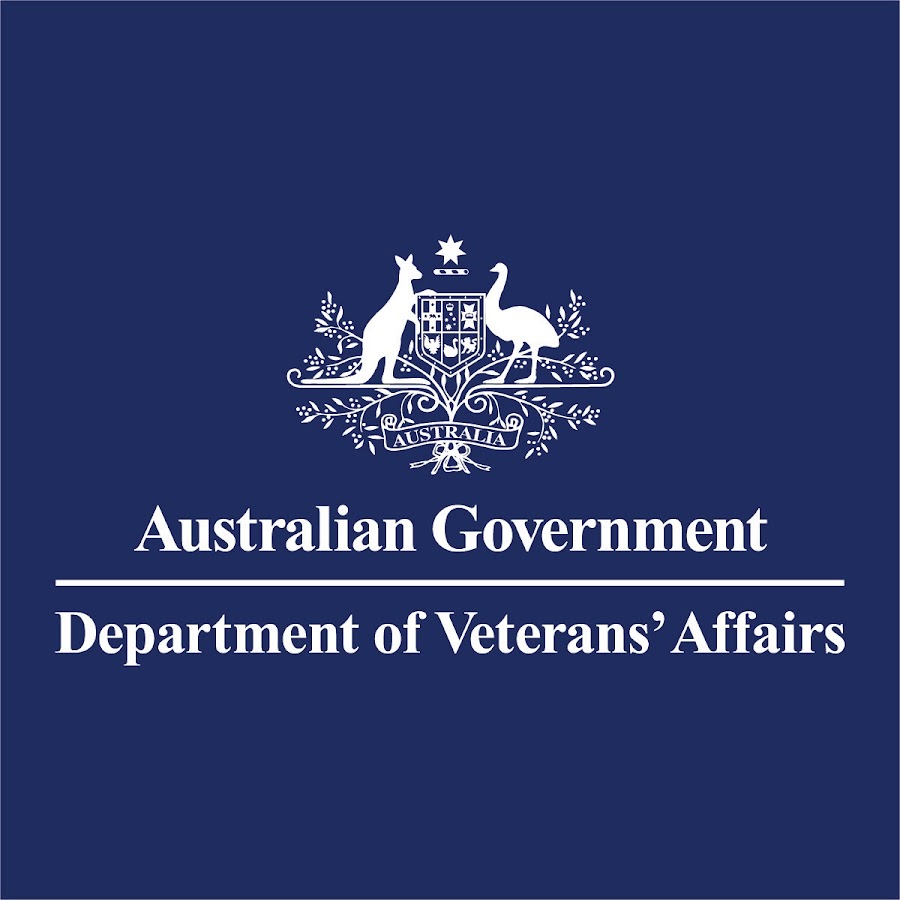Story by Sky News Australia
CLICK LINK to Sky News site.
Australian government against nuclear amid climate and energy crisis makes ‘no sense’ (msn.com)
It makes “no sense” that the government is against nuclear power as Australia faces an energy and climate crisis, Nuclear for Australia’s William Shackel says.
“When we’re experiencing an energy and climate crisis, it makes no sense why we would be restricting one of the cleanest and most reliable technologies, that being nuclear energy,” Mr Shackel told Sky News contributor Gary Hardgrave.
Climate Change and Energy Minister Chris Bowen has dismissed the Opposition’s push for nuclear to be part of Australia’s energy future.
A new Resolve poll, revealed exclusively by Sky News Australia, found less than one in five Australians oppose ending the ban on nuclear energy, while almost half the country is in favour.
When Resolve asked the 4700 Australians who were part of the poll if they supported the use of nuclear power in Australia, 33 per cent said yes while 24 per cent said they were opposed – a further 29 per cent said they either did ‘not have a strong view’, while 13 per cent were undecided.
The Man Rules
We always hear ” the rules”
From the female side.
Now here are the rules from the male side.
These are our rules!
1.. Men are NOT mind readers.
1a.. Learn to work the toilet seat. You’re a big girl. If it’s up, put it down. We need it up, you need it down. You don’t hear us complaining about you leaving it down.
- Sunday sports: It’s like the full moon or the changing of the tides. Let it be.
- Crying is blackmail.
- Ask for what you want. Let us be clear on this one:
- Subtle hints do not work!
- Strong hints do not work!
- Obvious hints do not work!
Just say it!
- Yes and No are perfectly acceptable answers to almost every question.
- Come to us with a problem only if you want help solving it. That’s what we do. Sympathy is what your girlfriends are for.
- Anything we said 6 months ago is inadmissible in an argument. In fact, all comments become Null and void after 7 Days.
- If you think your fat, you probably are. Don’t ask us.
- If something we said can be interpreted two ways and one of the ways makes you sad or angry, we meant the other one.
- You can either ask us to do something or tell us how you want it done. Not both… If you already know best how to do it, just do it!!
- Whenever possible, please say whatever you have to say during commercials…
- Captain Cook and Christopher Columbus did NOT need directions and neither do we.
- ALL men see in only 16 colours, like Windows default settings. Peach is a fruit, not A colour. Pumpkin is also a fruit. We have no idea what mauve is.
- If it itches, it will be scratched. We do that.
- If we ask what is wrong and you say “nothing,” We will act like nothing’s wrong. We know you are lying, but it is just not worth the hassle.
- If you ask a question, you don’t want an answer to expect an answer you don’t want to hear.
- When we must go somewhere, absolutely anything you wear is fine… Really.
- Don’t ask us what we’re thinking about unless you are prepared to discuss such topics as football or golf.
- You have enough clothes.
- You have too many shoes.
- I am in shape. Round IS a shape!
- Thank you for reading this.
Disclaimer: This list is intended purely for entertainment purposes, it’s essential to approach such humour with a light-hearted attitude and an awareness that everyone is different, with their own communication styles and needs. This disclaimer is necessary as Julie may read it and I need to advise her that I don’t require these rules hers are fine.
The Government has signed contracts with Hanwha Defence Australia to deliver and support 129 locally built Redback infantry fighting vehicles for the Australian Army.
The total value of project is approximately $7 billion dollars, representing the single largest investment in Army capability to date. The combined value of the acquisition and initial support contracts is approximately $4.5 billion dollars.
The Redback infantry fighting vehicles will be built at Hanwha Defence Australia’s state-of-the-art facility in Avalon, Greater Geelong, Victoria delivering hundreds of jobs to the local community.
Independent analysis forecasts that at the peak of its build, this project is expected to support approximately 2,100 jobs inclusive of 1,800 direct jobs.
As announced in July, Government is accelerating the delivery of the Redback infantry fighting vehicles, with the first vehicle to be delivered in 2027.
Entering into production and support contracts is another step towards Army’s transformation to meet our changing strategic circumstances.
The acquisition of these infantry fighting vehicles is part of the Government’s drive to modernise the Australian Army to ensure it can respond to the most demanding land challenges in our region.
The infantry fighting vehicles will be delivered at around the same time as the new HIMARS missile systems and Army Landing Craft – reflecting the Defence Strategic Review’s call for Army to be transformed for littoral manoeuvre operations from Australia. The infantry fighting vehicles will be operated by the 3rd Armoured Combat Brigade in Townsville.
The project will provide a significant economic boost to Australian defence industry and manufacturing capabilities, with over 90 Australian companies expected to contribute to the Redback’s local build.
By Mick Ryan
Mick Ryan is a retired major general who served in the ADF for more than 35 years and was commander of the Australia Defence College. He is the author of War Transformed and an adjunct fellow at the Centre for Strategic and International Studies in Washington DC.
December 29, 2023 — SMH
At Duntroon, we were told on morning parades to “ponder the day ahead”. It was wise advice. Currently, Australian strategists will be pondering the year ahead for our national security.
In Ukraine, Russia seeks to project an air of inevitable victory with a range of offensive activities. This is important tactically, as it seeks to reverse Ukrainian gains from 2023. It is also important politically as Russia approaches its 2024 elections, continues its global misinformation campaigns about Western patience, and offers a “ceasefire” that would allow it to reconstitute its forces for future offensives.
But Ukraine’s development of new defensive lines, and longer-range strike capacity, will make Russian offensives difficult to succeed.
The trajectory of the war in Ukraine in 2024 will be heavily influenced by whether the US Congress can agree on military assistance. While the Germans, Dutch, Danes and others have stepped up support for Ukraine, this will be insufficient to reconstitute the Ukrainian military for future offensives. US assistance will be essential for Ukraine’s 2024 campaigns.
The West has belatedly realised that Ukraine, and other burgeoning conflicts, are wars of industrial systems. Being able to out-produce adversaries in equipment and munitions is essential to warfighting and deterrence. The alignment of Russia, China, Iran and North Korea has developed into an Arsenal of Authoritarians. Western nations must make progress in this area in 2024.
The coming year will see a continuation of the conflict on the borders of Israel. Even when Israel tunes down the intensity of combat in Gaza, Hamas will still conduct ground combat and fire rockets into Israel. And Israel will rightly continue to conduct operations to protect its sovereignty and recover hostages.
Israel is fighting other wars on its periphery. The West Bank sees continuing tensions, and violence there is transitioning from “rocks to rifles” and more infiltration of Hezbollah from Jordan. In the south, the attacks against shipping by Yemen-based Houthis will continue despite the international armada formed to deter them. Without a campaign of land strikes against the Houthis, the allied maritime task force will have minimal impact.
It is on Israel’s northern border where the most danger lurks. As a senior Israeli Defence Force officer told me, “Hamas is minor leagues; Hezbollah are far more capable.” Hezbollah has a stockpile of nearly 150,000 rockets, with longer range and greater precision than Hamas rockets. It also has huge stockpiles of the latest long-range anti-tank weapons and has become adept at using drones for surveillance and kamikaze attacks against the IDF.
Hezbollah is dangerous for two other reasons. First, it has a large ground force which is better trained than Hamas, and has begun to use less centralised command methods. Second, Hezbollah has been able to re-establish itself in southern Lebanon, south of the Litani River, where it was prohibited from operating under UN resolution 1701. This makes it easier for them to surprise Israel and gives their rockets greater reach.
If open conflict emerges there in 2024, it will be more intense, and much bloodier, than the current Gaza conflict.
Finally, our region is becoming more perilous. The Chinese are increasing deployments of their aircraft carrier battle groups further afield, enacting thuggish aggression against nations such as Philippines on this high seas and interceptions of Western naval and air force assets across the Western Pacific.
They have also ramped up air and sea operations around Taiwan and incursions into its Air Defence Identification Zone. This is designed to test and wear down Taiwanese forces, rehearse the People’s Liberation Army in joint operations, and normalise high levels of PLA activity around the periphery of Taiwan.
Despite Xi Jinping’s recent nice words, actions speak louder. Chinese aggression will continue and expand if it perceives a lack of will among Western politicians to challenge it.
While there are many other issues ahead in 2024, including the Taiwanese, US and Russian elections, Ukraine, Israel and China comprise the “big three” strategic challenges for Western nations. It is starting to dawn on Western nations that, left unchallenged, authoritarian aggression might portend a darker and less free 21st century.
Notwithstanding the preference of the Australian government to shrink its worldview and almost exclusively focus on the South Pacific, the challenges of Ukraine, Israel and China will have a significant impact on our national security. Tactics and technologies from Ukraine and Israel will reshape military organisations – friendly and not so friendly – across the globe. And problems with the global defence supply chain mean Australia must step up its game in efficient, timely and local defence production.
But a flatlined defence budget is being inexorably eaten from within by Australia’s nuclear-powered submarine program, so the Australian Defence Force is reducing its combat forces and becoming less ready. Worse, the ADF appears to lack a modern vision for war-fighting. It is yet to show how it will align military strategy, operations and tactics across the domains of land, air, maritime, space and cyber. This is vital in an era when we can see more of the battlefield than ever before and as autonomous systems become increasingly lethal, and when we need to conduct long-range strike and close combat concurrently.
The year ahead is likely to be more unstable and violent than 2023. This will place a premium on better risk tolerance, improved use of resources, an increased defence budget and, importantly, good leadership in the Australian national security community. A tough 2024 awaits.
Australian researchers from the Australian Strategic Policy Institute (ASPI) have uncovered a significant disinformation campaign on YouTube orchestrated by a network called “Shadow Play.” Between October and November 2023, ASPI identified over 30 YouTube channels employing AI-generated audio, stock images, and consistent production techniques to spread disinformation on various topics.
These channels, collectively producing more than 4,500 videos, promoted narratives suggesting China’s superiority over the United States in a “technology war” and targeted specific companies like Huawei while downplaying achievements of US firms like Apple. The disinformation campaign, with a global reach, raised concerns due to its potential to covertly influence public opinion.
One notable instance involved four channels discussing the sale of Chinese-made buses to Nicaragua, each featuring similar content and edited versions of the same video to evade spam detection. The report highlighted shared thumbnails, keywords, and references among the channels.
ASPI named the network “Shadow Play” and emphasized its extensive impact, accumulating nearly 120 million views and 730,000 subscribers by the time of the report. The campaign’s ability to reach a vast audience globally raised alarms about its potential influence.
ASPI traced the origins of the campaign to a YouTube account sharing content from “Deepin Moments.” Through a structured search and analysis of metadata, the researchers identified patterns, leading them to conclude that the actor behind the videos is likely a native Mandarin speaker, familiar with the Chinese news cycle. ASPI believes the actor is potentially state-supported, aligning with China’s geopolitical goals.
Upon discovering the network, ASPI reported it to YouTube, resulting in the removal of accounts and videos due to terms of service violations related to misinformation.
In response to the findings, ASPI recommended increased transparency on social media platforms regarding the use of generative AI in content creation, urging investigations into such campaigns using in-house technical resources. They also called for closer monitoring by stock image providers and text-to-speech services to prevent misuse. ASPI suggested updates to terms of service to prohibit the use of such content for spreading disinformation.
Furthermore, ASPI proposed that the Five Eyes intelligence alliance share detailed information with policymakers, declassify investigations into similar operations, and consider public attribution of information operations to enhance societal resilience against such campaigns. The researchers anticipate that the identified network is likely more extensive than the reported 30 channels.
Veterans and partners who receive the Service Pension, Income Support Supplement or Age Pension and are entitled to the Work Bonus will be able to earn more income from employment before it affects their pension entitlements.
From 1 January 2024, the maximum limit for Work Bonus Bank balances will be permanently increased. This includes an increase to the maximum allowed Work Bonus Bank balance from $7,800 to $11,800, and will provide all newly eligible Work Bonus Bank clients with a starting Work Bonus Bank balance of $4,000.
In addition, beginning 1 July 2024, former Work Bonus Bank clients with a preserved Work Bonus Bank balance who are re-joining the scheme may be eligible to receive a top-up to ensure their balance is equal to $4,000 upon recommencement.
These changes will allow pensioners the opportunity to earn more income without affecting their pension, which will improve the financial independence and wellbeing of veterans and families.
More information about the Work Bonus Bank is available on the DVA website.
Jackson Boyd first sounded the bugle at the Australian War Memorial’s Last Post Ceremony as a teenager.
Five years on, the youngest bugler to perform at the ceremony has sounded The Last Post almost 300 times.
‘I started performing at the Memorial when I was 15 and it has become a big part of my life,’ he said.
‘The first time I was so nervous. It is a solo performance and you can’t hide behind anyone. Every note can be heard, good or bad.’
Each ceremony shares the story behind one of the names on the Roll of Honour. To date, the Memorial has delivered more than 3,600 ceremonies featuring individual stories of service from colonial to recent conflicts.
Memorial Director Matt Anderson said: ‘The Last Post Ceremony is our commitment to remembering and honouring the legacy of Australian service.
‘Through our daily Last Post Ceremony, we not only acknowledge where and how these men and women died, but we also tell the stories of who they were, when they lived and of the families who loved and, in so many cases, still mourn for them.’
Dan Hiscock, who sounded the bugle at the first Last Post Ceremony ten years ago, is now the Memorial’s Assistant Manager of Visitor Services. He regularly performs.
‘The Last Post is now associated with remembrance, but it was originally a bugle call to sound the end of the day’s activities in the military,’ he said.
‘It is a fitting way to end each day at the Memorial.
‘It is a privilege to be able to commemorate our fallen and, as the Memorial’s founder Charles Bean so eloquently put it, to guard the record which they themselves made. The music is such an evocative element of this ceremony, people have an emotional response to the sound of the Last Post.’
The first official ceremony, held 10 years ago on 17 April 2013, commemorated the service and sacrifice of Private Robert Poate, who was killed in Afghanistan in 2012.
The final Last Post Ceremony of the year featured the Memorial’s youngest bugler, Jackson Boyd.
‘It feels very important to play,’ he said. ‘Every ceremony is moving, especially the First and Second World War ones, but one of the most moving for me was when the Memorial honoured an Afghanistan veteran and his whole family was gathered there.’
The final Last Post Ceremony of the year was held on Sunday 31 December and told the story of Raymond Ernest Dallwitz.
From 1 January 2024, the Last Post Ceremony will have a will new start time of 4:30 pm.
Book your free ticket on the Upcoming Last Post Ceremonies page of the Memorial’s website.
Australia’s Hobart-class destroyer. Photo: Australian Department of Defence
In response to growing challenges and increased capabilities of adversaries in the Indo-Pacific region, the Albanese government’s Defence Strategic Update (DSR) has undertaken a comprehensive review of the Royal Australian Navy (RAN). The goal is to transform the RAN into a versatile and future-ready force, capable of addressing both tactical and strategic operational demands set by national policymakers. The review emphasizes the necessity for an upgraded surface combatant fleet that enhances lethality and complements a conventionally armed, nuclear-powered submarine fleet, adapting to the evolving strategic landscape.
The government’s focus lies in establishing a dispersed fleet consisting of “Tier 1” and “Tier 2” vessels, with a specific emphasis on bolstering the Navy’s capabilities in long-range strike (maritime and land), air defence, and anti-submarine warfare. Amidst these discussions, the Spanish government and Navantia Australia have proposed an expanded acquisition of the existing Hobart Class destroyer fleet. This proposal could potentially provide the Navy with an additional 114 missile cells at sea.
Simultaneously, BAE Systems Australia has presented a warship proposal to safeguard the $45 billion Hunter Class frigate program from significant cuts. Their plan involves restructuring the Hunter Class program to concurrently deliver a fleet of heavily armed guided missile destroyers alongside the Hunter Class frigates. BAE Systems’ proposal suggests the initial delivery of three Hunter Class vessels, followed by the construction of a new air warfare destroyer, alternating every two years between a frigate and a destroyer until a total of nine ships are built – comprising six frigates and three destroyers.
In a separate development, BAE UK has been actively working on a robust surface combatant, positioned as the successor to the Royal Navy’s Type 45 Daring Class guided missile destroyers. Leveraging the Type 26 Global Combat Ship hull form as a foundation, the Type 83 destroyer concept is anticipated to be a larger vessel, with an indicative delivery schedule commencing in the mid-2030s. The concept envisions a warship close to 12,000 tonnes, featuring a substantial weapons payload, including a standard five-inch main gun, two Phalanx Close-in Weapons Systems, two 30 or 40mm guns, and two unidentified close-in weapons systems. Notably, the most significant enhancement is the missile payload, divided into two banks of what appears to be Mk 41 vertical launch system cells, totalling an estimated 128 missile cells per ship.











